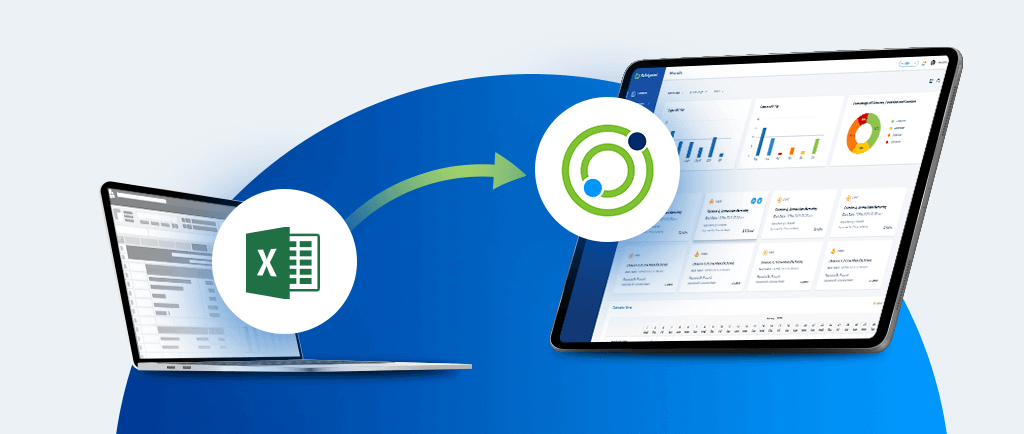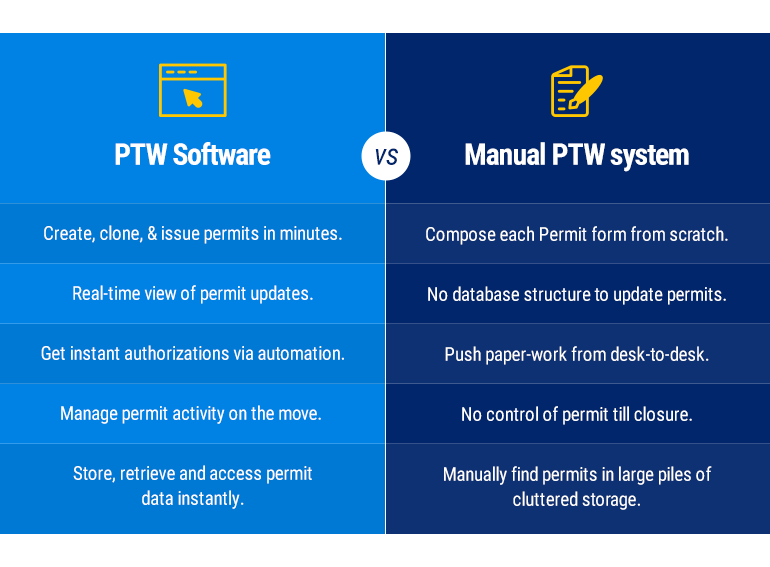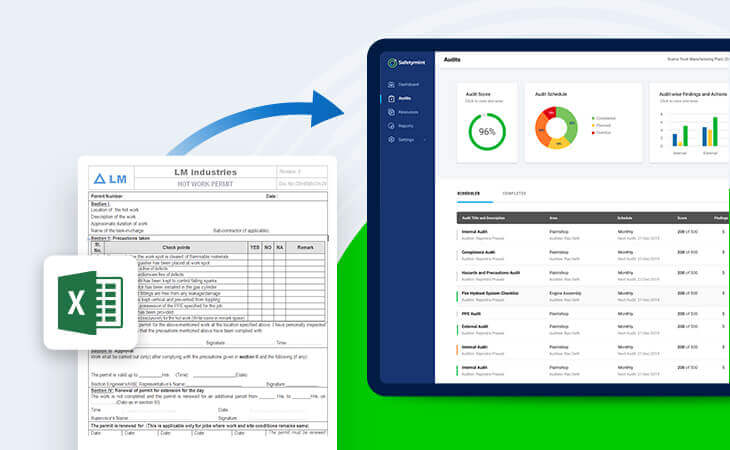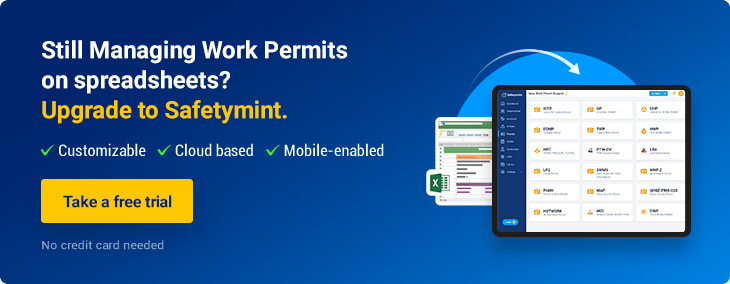
Managing Work Permits on Excel? Here’s What You are Missing.
In an era of unprecedented change, transforming processes to adopt digital ways of working has become the norm. Occupational health and safety is no different and is moving in the same direction.
Permit to work systems has long been a huge asset for site managers and supervisors. It ensures that every work carried out on-site follows the highest safety standard, is always recorded, scheduled and assigned to qualified personnel.
Yet, with evolving safety and regulatory requirements, the operational bottlenecks of traditional excel sheets or paper-based PTW system expose inadequacies to the current demands of workplace safety.
A digitized permit to work software empowers safety professionals to constantly engage with field operatives, process high volumes of data instantly and accurately, and ensure that safety processes are in place to effectively manage a large workforce (including contractors and sub-contractors).
Read on, as we dissect the differences between handling permits via spreadsheets and using an electronic permit to work software.

Save 70% of your time – switching from Excel to digital:
Large organizations process numerous permits to cover a wide range of operations. While manual processes require countless hours of carefully filling paper or excel forms under the strain of the ever-prevailing human-error.
A digitized permit management software automates the entire process in virtually minutes. You can use pre-built and pre-screened permit to work templates that can be modified to your requirement, clone permits for reuse, and add verifiable worker profiles from your database.
Go from zero-control to ample control:
Workers on the frontlines are always vulnerable to risk. With a manual permit system, it is impossible to track the current status of permits or even update workers on potential conflicts.
E-permits give you complete visibility of work activities from start to finish – helping you identify and communicate permit conflicts and non-compliance on-site instantly.
Turn operational adequacy to operational excellence:
With so much to do and so little time, organizations cannot afford to stall operational procedures due to an absence of authorized personnel to sign permit forms or latency delays in getting authorizations.
A digitized PTW system gives you enhanced mobility to take action from any remote location using your mobile phone or tablet – ensuring that the information is always pushed to the right people at the right time.
Bring people and processes on the same page:
The complexity of handling manual permits may lead to safety procedures getting circumvented in order to avert a crisis. This, in fact, may heighten the level of threat as you fall away from your safety bubble.
With an easy to use and configurable system, your workforce can be intuitively trained to adhere to your company’s exacting EHS policy.
Make permit information instantly accessible:
Finding permits buried in stacks of files can cause incessant delays and break efficiency by delegating staff to overlook non-value added tasks.
A PTW software comes with a secure cloud-based repository, where permit data is made instantly accessible to defined user-roles across all browsers and devices.

About Safetymint Permit to Work Software:
Switching from spreadsheets to a digitized PTW system can be a life-saver. With Safetymint Permit to Work Software, making the shift can be a whole lot easier and efficient.
Safetymint is a feature-rich and fully customized PTW solution that streamlines all permit operations to create a system that is faster, connected, easy to use, highly collaborative with increased accessibility and control.
There’s no set-up fee or long-term contracts, you can request for a free trial and digitize your work permits process.
Have a question? Get in touch with us.
Related read: Our listing of the best Control of Work software.
Also read: Our article on the meaning of PTW
Joshua Martyn was a content manager at Safetymint, crafting helpful contents that enlighten readers and EHS professionals alike, about fresh trends, technologies and perspectives from the world of safety.





